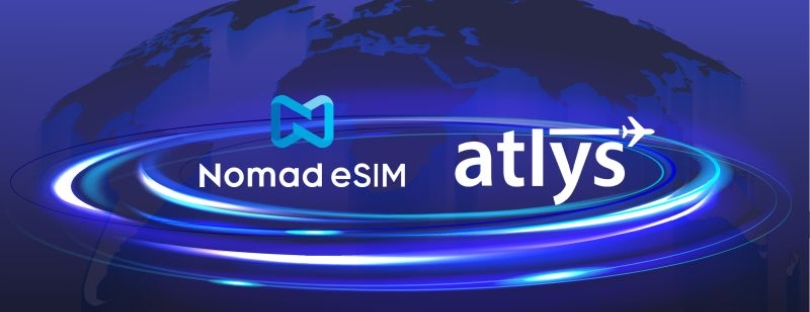
Are eSIMs the Death of Roaming? Find Out How eSIMs Disrupt Traditional Roaming Models & Challenging Telecom Monopolies
In a world driven by globalization and technology, staying connected is no longer a luxury—it’s a necessity. But as connectivity demands rise, traditional roaming services are being challenged by a game-changing technology: eSIM ‘s. This innovation isn’t just an alternative; it’s a seismic shift that threatens the foundations of traditional telecom monopolies. Are eSIMs the death of roaming?
Let’s delve into how they’re transforming global connectivity and empowering consumers.
The Problem with Traditional Roaming
Traditional roaming has long been a source of frustration for travelers and businesses alike. Despite its convenience, it comes with a steep price:
- Exorbitant Costs: Roaming fees are notorious for being overpriced, with users often shocked by hefty bills after short trips abroad.
- Limited Flexibility: Switching between providers is cumbersome, requiring physical SIM card swaps or expensive multi-country plans.
- Lack of Transparency: Many users struggle to understand complex roaming charges, leading to unexpected costs.
These challenges are compounded by telecom companies’ control over pricing, leaving customers with few alternatives. Enter eSIM technology, poised to disrupt this outdated model.
What Are eSIMs and Why Are They Revolutionary?
An eSIM (embedded SIM) is a programmable SIM card integrated directly into devices like smartphones, tablets, and wearables. Unlike traditional SIM cards, which require physical insertion, eSIMs allow users to download and switch between profiles digitally. This capability revolutionizes the way we connect, especially for frequent travelers and multinational businesses.
Key Advantages of eSIMs
-
- Cost Savings: Access local rates without paying inflated roaming fees by downloading local profiles.
- Seamless Switching: Transition between carriers instantly without the hassle of physical cards.
- Global Accessibility: Connect in over 200 countries with a single eSIM-enabled plan.
- Eco-Friendly: Reduce plastic waste by eliminating physical SIM cards.
- AIRALO
-
eSIM for
Europe
39 countries
-
1 GB – 7 days – €4.27
3 GB – 30 days – €11.09
10 GB – 30 days – €31.57
- AIRHUB
-
eSIM for
Europe
34 countries
-
1 GB – 7 days – €2.99
3 GB – 30 days – €5.12
10 GB – 30 days – €11-09
- aloSIM
-
eSIM for
Europe
32 countries
-
1 GB – 7 days – €5.00
3 GB – 30 days – €13.00
10 GB – 30 days- €36.00
- GigSky
-
eSIM for
Europe
36 countries
-
1 GB – 7 days – €6.99
3 GB – 15 days – €11.19
10 GB – 30 days – €27.99
- iRoamly
-
eSIM for
Europe
39 countries
-
1 GB – 7 day – €6.83
3 GB – 15 days – €10.24
10 GB – 30 days – €18.77
- Maya Mobile
-
eSIM for
Europe
34 countries
-
1 GB – 7 days – –
5 GB – 15 days – €5.99
10 GB – 30 days- €13.99
- NOMAD
-
eSIM for
Europe
36 countries
-
1 GB – 7 days – €4.71
3 GB – 15 days – €10.27
10 GB – 30 days – €15.41
- UBIGI
-
eSIM for
Europe
29 countries
-
500 MB – 1 day – €2.00
3 GB – 30 days – €8.00
10 GB – 30 days – €19.00
- VOIA
-
eSIM for
Europe
34 countries
-
1 GB – 7 days – €2.69
3 GB – 15 days – €5.05
10 GB – 30 days- €11.70
How eSIM ‘s Disrupt Traditional Roaming Models
eSIMs directly challenge telecom monopolies by removing their stranglehold on global roaming rates. Here’s how:
Increased Consumer Choice
With eSIMs, consumers can bypass their home network providers entirely. Platforms offering global eSIM plans empower users to select affordable, high-quality options from a pool of providers. This freedom erodes telecom companies’ ability to lock customers into expensive roaming agreements.
Breaking Down Borders
Unlike traditional roaming plans limited by regional partnerships, eSIMs facilitate truly borderless connectivity. Travelers can download multiple profiles in advance or on arrival, ensuring uninterrupted service at local rates.
Data-Only Plans Dominate
The rise of data-focused eSIM plans caters to modern users who prioritize internet access over voice calls. As streaming, messaging apps, and VoIP services replace traditional telecom functions, the relevance of conventional roaming diminishes.
The Consumer Perspective: Solving Real Problems
For consumers, the primary problem has always been cost and convenience. Here’s how eSIMs addresses both:
-
-
- Lower Travel Costs: An eSIM eliminates the need for overpriced international roaming plans, allowing travelers to use local networks.
- Instant Activation: Say goodbye to visiting stores or swapping SIM cards. eSIMs can be activated in minutes via a simple app.
- Enhanced Security: Physical SIM cards are susceptible to theft or loss, whereas eSIMs offer a secure, digital alternative.
-
Challenges to Telecom Providers
The advent of eSIMs isn’t just a win for consumers; it’s a wake-up call for telecom providers. Are eSIMs the death of roaming? For many traditional models, the answer might be yes.
Loss of Revenue
Roaming fees have historically been a cash cow for telecom companies. As eSIM adoption grows, this revenue stream is shrinking, forcing providers to adapt.
Forced Innovation
Telecom companies are now under pressure to offer competitive international plans and improve transparency to retain customers. Those that fail to innovate risk losing relevance in a rapidly changing market.
Shift in Power Dynamics
By empowering consumers to choose their networks, eSIMs disrupt the monopolistic hold telecom giants have had on global connectivity.
 Industries Benefiting from eSIM Adoption
Industries Benefiting from eSIM Adoption
While eSIMs are a boon for individual travelers, their impact extends far beyond personal use.
Corporate Travel
Global businesses with employees who frequently travel benefit from eSIMs’ cost efficiency and seamless connectivity. Centralized management tools for eSIM profiles streamline operations and reduce communication expenses.
IoT and Wearables
eSIM technology plays a crucial role in the Internet of Things (IoT), enabling smart devices like cars, watches, and sensors to stay connected worldwide.
Healthcare
For remote monitoring devices used internationally, eSIMs ensure uninterrupted connectivity, enhancing patient care.
Are telecom monopolies facing extinction?
The question isn’t whether telecom monopolies will adapt but how quickly. To stay competitive, providers must embrace eSIM technology rather than resist it. Initiatives like partnering with global eSIM platforms or offering competitive eSIM plans are already emerging as viable strategies.
The Future of Connectivity: What Lies Ahead?
The widespread adoption of eSIMs marks a turning point in telecommunications. Here’s what we anticipate in the coming years:
-
-
- Increased Adoption: As more devices become eSIM-compatible, consumer demand will rise.
- Global Standards: The telecom industry will push for universal eSIM standards to simplify implementation.
- Competitive Pricing: Expect a race among providers to offer the best value, benefiting consumers.
-
Conclusion: Embrace the Disruption
Are eSIM ‘s the death of roaming? While traditional roaming models are unlikely to vanish overnight, their dominance is undoubtedly waning. The rise of eSIM technology represents a shift toward greater consumer empowerment, affordability, and global accessibility. For telecom companies, it’s a call to innovate—or risk obsolescence.
As this technology continues to evolve, one thing is clear: the days of overpriced and restrictive roaming are numbered, and the future of connectivity is borderless.














 Industries Benefiting from eSIM Adoption
Industries Benefiting from eSIM Adoption



